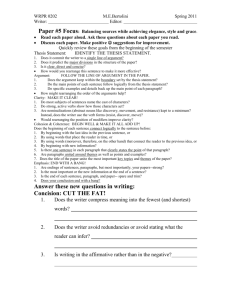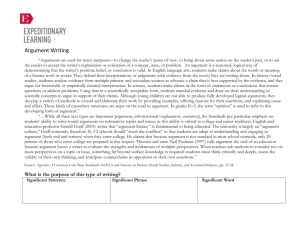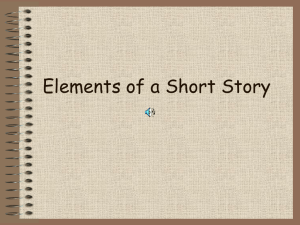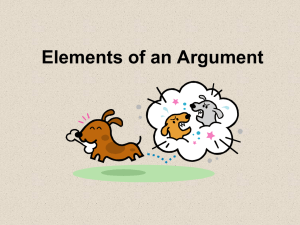What is Rogerian Argument
advertisement
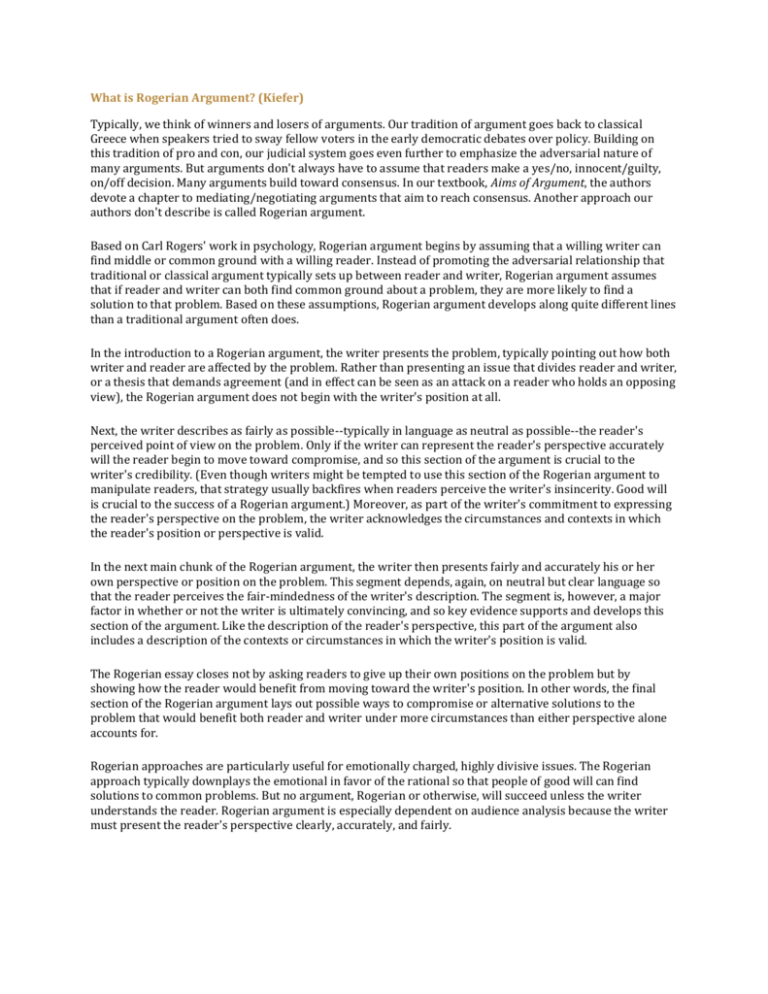
What is Rogerian Argument? (Kiefer) Typically, we think of winners and losers of arguments. Our tradition of argument goes back to classical Greece when speakers tried to sway fellow voters in the early democratic debates over policy. Building on this tradition of pro and con, our judicial system goes even further to emphasize the adversarial nature of many arguments. But arguments don't always have to assume that readers make a yes/no, innocent/guilty, on/off decision. Many arguments build toward consensus. In our textbook, Aims of Argument, the authors devote a chapter to mediating/negotiating arguments that aim to reach consensus. Another approach our authors don't describe is called Rogerian argument. Based on Carl Rogers' work in psychology, Rogerian argument begins by assuming that a willing writer can find middle or common ground with a willing reader. Instead of promoting the adversarial relationship that traditional or classical argument typically sets up between reader and writer, Rogerian argument assumes that if reader and writer can both find common ground about a problem, they are more likely to find a solution to that problem. Based on these assumptions, Rogerian argument develops along quite different lines than a traditional argument often does. In the introduction to a Rogerian argument, the writer presents the problem, typically pointing out how both writer and reader are affected by the problem. Rather than presenting an issue that divides reader and writer, or a thesis that demands agreement (and in effect can be seen as an attack on a reader who holds an opposing view), the Rogerian argument does not begin with the writer's position at all. Next, the writer describes as fairly as possible--typically in language as neutral as possible--the reader's perceived point of view on the problem. Only if the writer can represent the reader's perspective accurately will the reader begin to move toward compromise, and so this section of the argument is crucial to the writer's credibility. (Even though writers might be tempted to use this section of the Rogerian argument to manipulate readers, that strategy usually backfires when readers perceive the writer's insincerity. Good will is crucial to the success of a Rogerian argument.) Moreover, as part of the writer's commitment to expressing the reader's perspective on the problem, the writer acknowledges the circumstances and contexts in which the reader's position or perspective is valid. In the next main chunk of the Rogerian argument, the writer then presents fairly and accurately his or her own perspective or position on the problem. This segment depends, again, on neutral but clear language so that the reader perceives the fair-mindedness of the writer's description. The segment is, however, a major factor in whether or not the writer is ultimately convincing, and so key evidence supports and develops this section of the argument. Like the description of the reader's perspective, this part of the argument also includes a description of the contexts or circumstances in which the writer's position is valid. The Rogerian essay closes not by asking readers to give up their own positions on the problem but by showing how the reader would benefit from moving toward the writer's position. In other words, the final section of the Rogerian argument lays out possible ways to compromise or alternative solutions to the problem that would benefit both reader and writer under more circumstances than either perspective alone accounts for. Rogerian approaches are particularly useful for emotionally charged, highly divisive issues. The Rogerian approach typically downplays the emotional in favor of the rational so that people of good will can find solutions to common problems. But no argument, Rogerian or otherwise, will succeed unless the writer understands the reader. Rogerian argument is especially dependent on audience analysis because the writer must present the reader's perspective clearly, accurately, and fairly.


